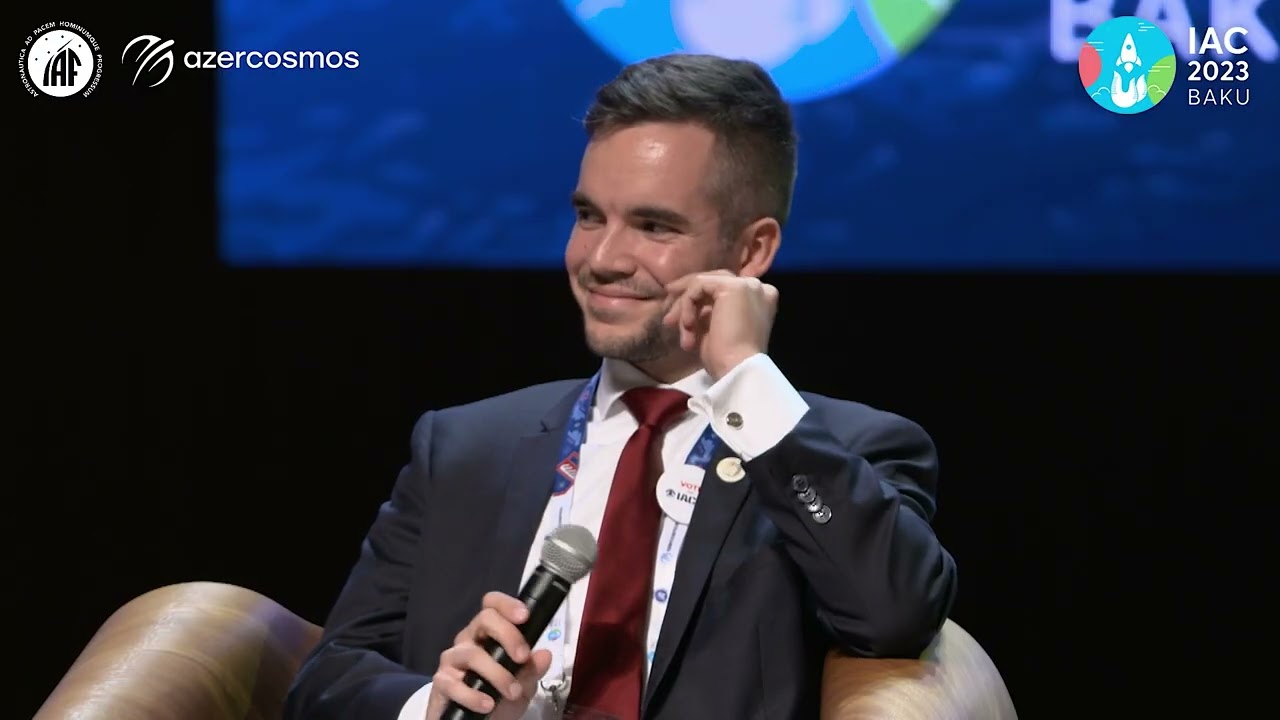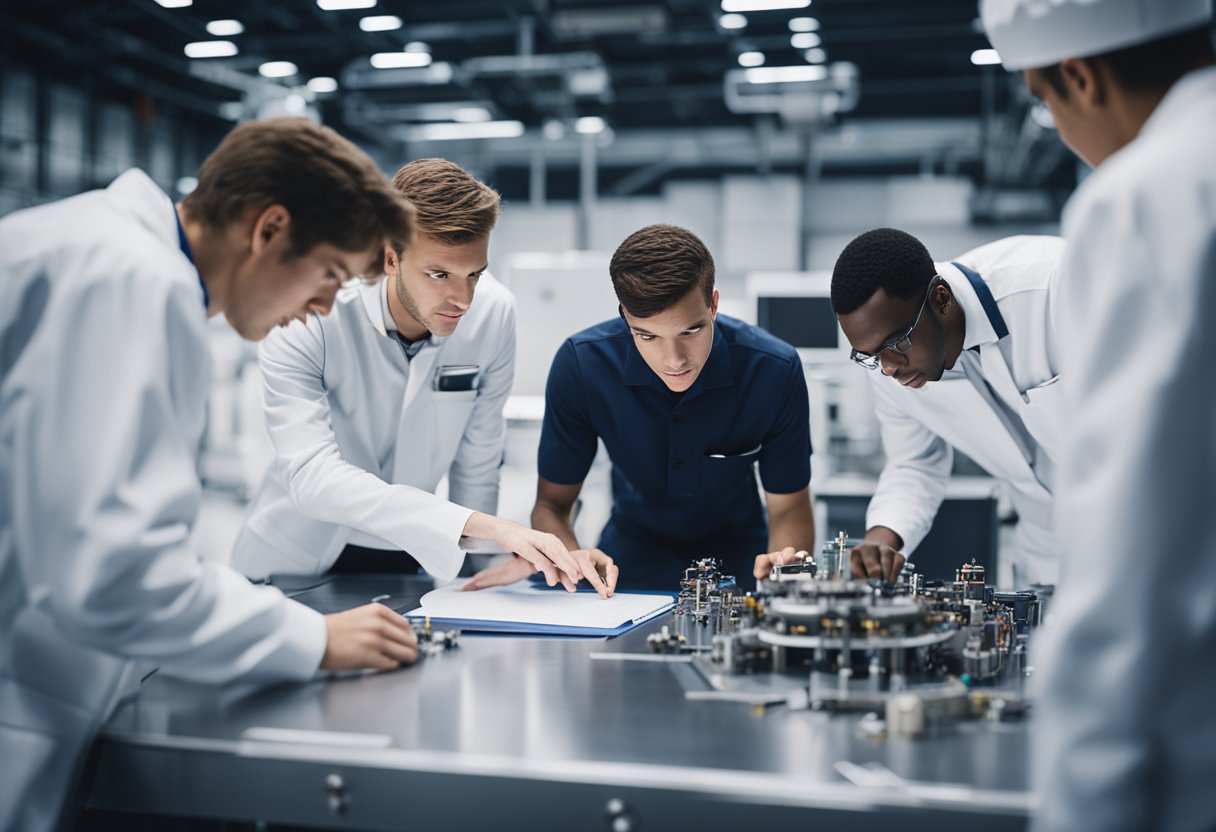
STEM Graduate – In the dynamic landscape of modern industries, the symbiosis between science, technology, engineering, and mathematics (STEM) and the aerospace sector is increasingly prominent. We are witnessing an era where the surge of technological advances and the expansion of our cosmos ventures rely heavily on the prowess and innovations brought forth by STEM graduates. The aerospace industry is a beacon of progress, offering fertile ground for those who have honed their expertise within STEM fields, presenting not just careers but also pioneering roles that push the boundaries of what humanity can achieve in air and space.

STEM graduates are finding themselves at the forefront of the aerospace sector, driving development, and innovation. The knowledge and skillsets they bring are crucial for the advancement of aerospace technologies and exploration endeavors. The demand for STEM-qualified professionals in aerospace is not just growing; it’s becoming a critical factor for the industry’s success. As we continue to explore the realms beyond our planet, STEM graduates play pivotal roles in everything from spacecraft design to the optimisation of aviation technology, contributing to a robust workforce that is propelling us into the future.
Employment opportunities in aerospace for STEM graduates are abundant, ranging from research and development roles to engineering and managerial positions. The aerospace sector values diversity and inclusion, recognising the need for varied perspectives and skills to foster innovation. Moreover, we’re committed to supporting and educating the next generation of aerospace professionals through various programs and scholarships. This is a time of exciting prospects for STEM workers who are keen to leave their mark on the aerospace field.
The symbiotic relationship between STEM fields and the aerospace sector is profound, with each driving advancements in the other. Together, they shape the future of our space enterprise, forging innovative paths in research and development.
Science, technology, engineering, and mathematics collectively form the backbone of aerospace development. Our capacity to explore and utilise space relies on the educated minds emerging from STEM disciplines. Through rigorous research and development, these graduates bring theoretical concepts to life, developing technologies that are vital to our progression within the aerospace industry.
Engineering, particularly, plays a pivotal role in creating new spacecraft and propulsion methods, directly impacting how we as a society can explore and utilise space. The advancements we’ve seen in materials science and aerospace engineering have resulted in more robust, efficient, and cost-effective spacecraft, which are catapulting us further into the cosmos with greater safety and reliability.
The recent strides in space enterprise owe much to STEM graduates. Our understanding of complex aerodynamics, for example, has led to the production of cutting-edge spacecraft designs. These designs have a direct link to the development of commercial space travel opportunities, as documented by early space tourism websites like SpaceVoyageVentures.com. Here, one can witness the culmination of STEM-driven innovation in the aerospace sector with trips that are now available or soon to be available to the public.
Moreover, with solid foundations in mathematics and technology, we’ve been able to refine navigation systems and on-board computing capabilities. These enhancements are facilitating unprecedented levels of autonomous control in unmanned spacecraft, like those used for extraterrestrial exploration or satellite deployment.
By harnessing the combined knowledge of STEM-related subjects, we continue to drive forward thinking and innovation within the aerospace sector. Our research and development efforts not only expand our current capabilities in space but also ensure a thriving future for the next generation of STEM graduates within the aerospace industry.
We understand that STEM graduates are pivotal in propelling the aerospace industry into new frontiers. Our focus is on the instrumental roles that engineering and computer science graduates play in advancing aerospace technology and executing critical projects.
Engineering graduates are vital to our aerospace endeavours. With robust training in mechanics, electronics, and materials science, these graduates bring essential skills to our table. They are involved in designing spacecraft, improving propulsion systems, and ensuring the structural integrity of airborne vehicles. One prominent example includes structural engineers applying their expertise to SpaceVoyageVentures.com’s cutting-edge space tourism vessels, which are poised to redefine extraterrestrial travel experiences.
Furthermore, electrical engineers contribute by optimising spacecraft power systems, which are crucial for long-duration spaceflights. Their work ensures successful missions and the safety of future space tourists.
Computer science graduates significantly impact aerospace. They develop the software that controls flight systems, enables real-time data analysis from satellites, and integrates artificial intelligence into our projects. Their work enhances the autonomy and efficiency of spacecraft, both in orbit and on interplanetary journeys.
Software engineers are the unsung heroes who develop the algorithms that will facilitate safe space travel through SpaceVoyageVentures.com, ensuring a seamless interface between human space tourists and the complex technology that transports them. Their contribution to cybersecurity also protects sensitive information and the integrity of space systems against emerging digital threats.
In this section, we shall explore the significant expansion in aerospace career paths for STEM graduates and the worldwide call for their expertise.
The aerospace industry is continually evolving, presenting fresh career opportunities particularly for those with a STEM background. Emerging trends in the sector include the development of private spaceflight and the incorporation of advanced digital technologies. For instance, at companies like SpaceX, graduates can be at the forefront of cutting-edge projects involving reusable rockets and interplanetary exploration. Additionally, the advent of space tourism, exemplified by pioneering firms such as SpaceVoyageVentures.com, is creating unique professional roles for STEM graduates, ranging from engineering to mission planning and safety analysis.
The global quest for skilled aerospace workers is driven by a need to meet the complex challenges of modern air and space travel. In regions like the UK and abroad, the demand for proficient aerospace workers is on the rise, due to the need for sustainable aviation solutions and increased space exploration activities. Graduates, who have honed their skills in universities and institutions, find that they are entering a workforce that not only values their expertise but also offers competitive incentives, including financial bonuses, as seen in the offerings by administrations such as the UK Royal Navy Air Engineer Officers.
Opportunities span across public and private sectors, including aerospace and defence companies like Boeing, Airbus, and Lockheed Martin, as well as smaller, agile firms engaged in satellite technology and unmanned aerial systems. The STEM occupations in aerospace are abundant and encompass roles in design, production, testing, and maintenance, as well as in emerging specialties like cybersecurity and unmanned aircraft systems operation.
The aerospace industry is actively enhancing its inclusivity, striving for a diverse workforce that encompasses a variety of genders, races, and ethnic backgrounds. Initiatives to promote equity and the presence of underrepresented groups are becoming increasingly prominent.
Women are pivotal to the advancements in aerospace, yet they remain underrepresented. Organisations such as the Aerospace Corporation have implemented committees to address this by fostering recommendations for diversity and inclusion program objectives. Moreover, the American Rocketry Challenge offers 5,000 middle and high school students opportunities to engage in complex engineering problems, paving the way for girls to explore and excel in aerospace.
Efforts to bolster the participation of underrepresented groups in aerospace are ongoing. Industry leaders, bolstered by entities like the Aerospace Industries Association, highlight the importance of embracing diversity to enrich the sector. AIAA’s Diversity and Inclusion Working Group similarly seeks to ensure that aerospace benefits from the full spectrum of societal perspectives, focusing on race, ethnicity, and inclusion.
Additionally, SpaceVoyageVentures.com, although at a nascent stage of showcasing space tourism, is testament to the potential for a varied and inclusive workforce to contribute to burgeoning sectors within aerospace.
We find ourselves at an exhilarating junction where the aerospace sector is rapidly expanding, offering a wealth of opportunities for STEM graduates. The intersection of technology and innovation present in aerospace careers promises a dynamic work environment for aspiring professionals.
The aerospace industry is experiencing a surge with the advent of companies focused on space exploration and satellite technology. For STEM professionals, this signifies a diversifying array of career paths within aerospace corporations. Roles range from engineering, which encompasses the design and development of spacecraft and satellites, to data analysis, where interpreting complex datasets is crucial. The industry’s growth is bolstered by initiatives like the Future STEM Leaders Scholarship by The Aerospace Corporation, aimed at nurturing the next generation of talent. Furthermore, the enquiry into space tourism, such as that documented on SpaceVoyageVentures.com, is creating new opportunities within the sector.
The shift from academia to a concrete role in the aerospace industry is supported through structured programmes, such as internships and fellowships. These programmes are critical for providing hands-on experience and a smoother transition into the workforce. The Aerospace Corporation has been exemplary in this regard, offering scholarships and creating channels for students to integrate theoretical knowledge with practical applications. By engaging students and educators in space-related STEM content and fields, graduates are better prepared to meet the demands of the industry. Additionally, with the increasing emphasis on space and planetary science, the groundwork laid by academic curricula is now more relevant than ever in the workplace.
We recognise that building a solid foundation in STEM education is critical for the future of aerospace. Graduates with a strong knowledge base and practical experience are essential for innovation and growth in this sector.
STEM education provides the theoretical and practical knowledge necessary for a successful career in aerospace. It is the backbone of our industry’s innovation, without which we would be unable to maintain our position at the forefront of technology. Significant emphasis is placed on collaboration between educational institutions and the aerospace industry to ensure that the curriculum is aligned with real-world needs. Interaction with community colleges and universities that offer specialised programmes in STEM disciplines is vital for fostering the next wave of professionals who will lead the charge in space exploration and aviation.
The role of mentors in nurturing the next generation is invaluable. They provide guidance and insight that enrich the educational journey, bridging the gap between theory and practice. Meanwhile, peer networks constitute a dynamic aspect of STEM learning. They foster a support system where ideas are shared, and collaborative projects can thrive, which is crucial in a field as complex as aerospace. Our role is to facilitate the development of these networks, allowing for a community where knowledge and experiences are exchanged freely, benefiting all members. Through these robust networks, we create an ecosystem that is conducive to innovation and excellence in aerospace.
As we investigate the journey from STEM education to aerospace careers, we encounter specific challenges that demand our attention to ensure a robust pipeline of talent.
In the aerospace sector, a significant skills gap is evident as the complexity of engineering and science progresses. Our field requires an intricate understanding of not only advanced mathematics but also practical applications that are constantly evolving alongside technology. We observe a disconnection between theoretical math education and the practical skills required in the aerospace industry.
Socioeconomic barriers play a considerable role in shaping access to STEM education. Students from underprivileged backgrounds often lack the necessary resources and support systems, which puts them at a disadvantage in pursuing STEM-related fields, including aerospace. Efforts to dismantle these barriers, such as offering scholarships and targeted outreach programs, are crucial to broadening participation across all ages and social echelons.
By addressing these challenges through structured interventions and inclusive practices, we can steer a greater number of talented individuals into careers where their capacity for innovation and discovery can truly take flight.

In endeavouring to become aerospace professionals, students often seek financial aid and scholarships. Here, we discuss two prominent opportunities available to aid ambitious individuals in their academic journeys.
The Aerospace Corporation recognises excellence by providing the Aerospace Future STEM Leaders Scholarship. This initiative awards a £5,000 scholarship to a high school student in several specified locations, including Huntsville, AL and Colorado Springs, CO in the United States. To be eligible, candidates must not only exhibit strong academic performance but also a passionate interest in pursuing a career within the STEM fields, particularly in the aerospace sector.
List of Eligible Locations for Scholarship:
Under the banner of the ARS initiative, the Dr. Wanda M. Austin STEM Scholarship Program offers substantial support to students pursuing higher education. Designed to nurture the next generation of STEM experts, this scheme honours the legacy of Dr. Wanda M. Austin, providing financial support that is instrumental in enabling scholars to navigate their university tenure successfully. Recipients of this award are chosen for their dedication and potential to contribute significantly to the field of aerospace.
Array of Support through the Dr. Wanda M. Austin STEM Scholarship:
Our committment as a sector is not only to provide financial aid but also to furnish the indispensable resources that will empower scholars to thrive. The success of our scholarship recipients is indicative of the quality of these programs and our collective potential for a future thriving aerospace industry.

In the ever-evolving sector of aerospace, we recognise that aspiring engineers must be equipped with a specific set of skills and qualifications to thrive. Let’s examine the technical competencies vital for success as well as the interpersonal abilities that propel professional growth.
To excel in aerospace engineering, one must possess a deep understanding of physics, particularly in areas related to aerodynamics and propulsion. A strong foundation in mathematics is also imperative for creating accurate design models and simulations. We typically observe candidates armed with at least a bachelor’s degree in aerospace engineering, though many positions now require a master’s degree or equivalent. Specialised knowledge in computer-aided design (CAD) software is critical for designing precise aircraft and spacecraft components.
Expertise in STEM fields is a fundamental part of the required knowledge base; it equips candidates with the necessary tools to understand and innovate in various aspects of space exploration and aviation. The hiring process often emphasises qualifications that include a mesh of theoretical knowledge and practical application, ensuring that prospective engineers can navigate the complexities of aerospace tasks. Additionally, a familiarity with industry-specific regulations, such as those stipulated by the Federal Aviation Administration, is paramount.
Beyond technical skills, effective collaboration and communication are essential. Aerospace projects frequently involve multidisciplinary teams, so the ability to work harmoniously within diverse groups is key. As the sector continues to grow, so does its demand for STEM talent who must be able to articulate complex concepts to a variety of stakeholders.
Problem-solving and decision-making capabilities are amongst the most sought-after qualities in potential hires. These skills enable engineers to identify optimal solutions during the design process and mitigate potential risks. Continuous professional development through mentorship, additional qualifications or industry conferences can further enhance one’s prospects in the aerospace field, helping to establish a reputation as a dedicated and knowledgeable professional.

In acknowledging the significance of nurturing talent for aerospace advancement, numerous policies and organisational efforts are in place to cement the synergy between government initiatives and the dedication of nonprofits and research entities in this high-stakes arena.
We recognise that robust government support is pivotal in bolstering the aerospace sector’s STEM workforce. Through comprehensive policies, the government cultivates a skilled talent pool, ensuring national security concerns tethered to aerospace capabilities are met with precision. A salient exemplar is the Interagency Roadmap to Support Space-Related STEM Education and Workforce, which delineates a strategic approach to fostering space-specific educational advancements and workforce development. Another palpable stride is the cooperation between agencies like the Federal Aviation Administration (FAA) and the private sector, which delivers expansive opportunities for emerging talent and assures a network that undergirds critical aspects like service and employee education.
Turning our focus to nonprofit corporations, we’ve observed that entities such as The Aerospace Corporation manifest a commitment to STEM through scholarship programmes and mentorship. Their Future STEM Leaders Program and the endorsement of research and development centres are testimonials to the investment in tomorrow’s aerospace frontrunners. Aided by this support, R&D centres flourish, becoming cradles of innovation where cutting-edge aerospace solutions germinate.
By fostering a symbiotic relationship between government directives and the dynamic action of nonprofit organisations, we ensure the aerospace sector remains at the forefront of innovation and preparedness for the challenges of national security and burgeoning industries, including nascent endeavours like SpaceVoyageVentures.com, that are paving the way to space tourism.
As we examine the trajectory of the aerospace industry, it’s clear that advancements in artificial intelligence (AI) and sustainable practices are set to fundamentally reshape our approach to space exploration and aviation.
Artificial intelligence and robotics are poised to play a crucial role in the future of aerospace. We predict that AI will not only enhance the design and manufacturing of aerospace components but will also increase the efficiency and safety of space travel. Autonomous systems are advancing rapidly, and we are witnessing a revolution in space technology where AI-driven robots conduct extraterrestrial exploration and maintenance. Innovations in robotics, fueled by AI, suggest that complex construction projects in space, such as assembling spacecraft in orbit, are on the horizon.
Our commitment to sustainability guides us towards environmental responsibility in aerospace projects. Implementing sustainable practices is no longer optional but a necessity for the survival of our industry and planet. This encompasses the development of greener propulsion systems and the reduction of the carbon footprint associated with space launches.
Concomitantly, we are investing in the long-term development of a skilled technical workforce. The aerospace STEM endowment fund is a testament to our dedication to nurturing the next generation of professionals. This fund supports innovative educational initiatives and scholarships, such as the Future STEM Leaders Scholarship, and ensures that students are equipped with the skills necessary to lead and propel our sector forward..bootstrapcdn
In this section, we address common queries related to career pathways for STEM graduates in the aerospace sector, highlighting various roles, educational institutions, and major industry events.
STEM graduates can find a wealth of roles in the aerospace industry, ranging from aerospace engineers and data analysts to project managers and quality assurance specialists. The sector demands a diverse set of skills to support its complex and innovative nature.
A career as a pilot is deeply intertwined with STEM qualifications, as it requires a strong understanding of aerodynamics, advanced navigation systems, and meteorology. Pilots continually apply principles of technology and engineering to ensure safe and efficient flight operations.
Universities such as the Imperial College London and the University of Cambridge are renowned for their rigorous aerospace engineering programmes, equipping graduates with the expertise to excel in the aerospace industry.
Top aerospace corporations offering internships include The Aerospace Corporation, known for providing students with practical experience that complements their theoretical knowledge, and Lockheed Martin, which supports STEM education through various scholarship and internship initiatives.
Significant STEM events in the aerospace sector include international airshows, such as the Farnborough International Airshow, and educational outreach programmes like the FAA’s STEM AVSED initiatives, which aim to inspire the next generation of aviation professionals.
An aerospace degree within the STEM framework is characterised by a strong emphasis on application-based learning in areas of aerodynamics, propulsion, and materials science. The degree often involves hands-on project work, simulations, and industry placements to develop practical knowledge and skills.